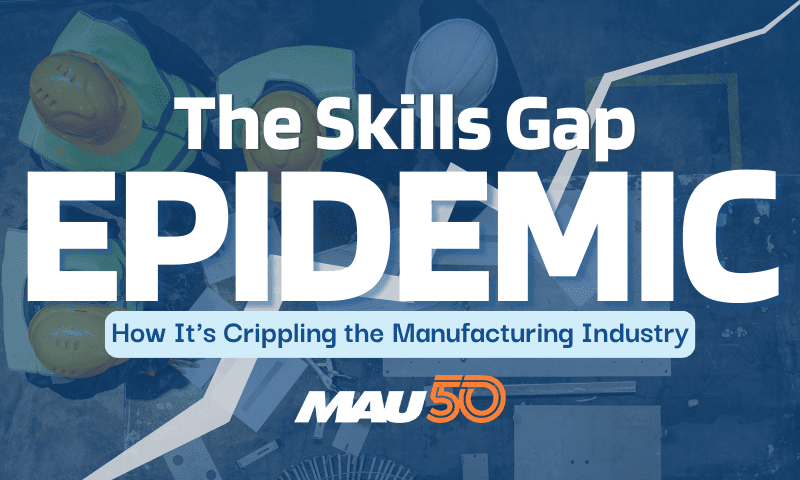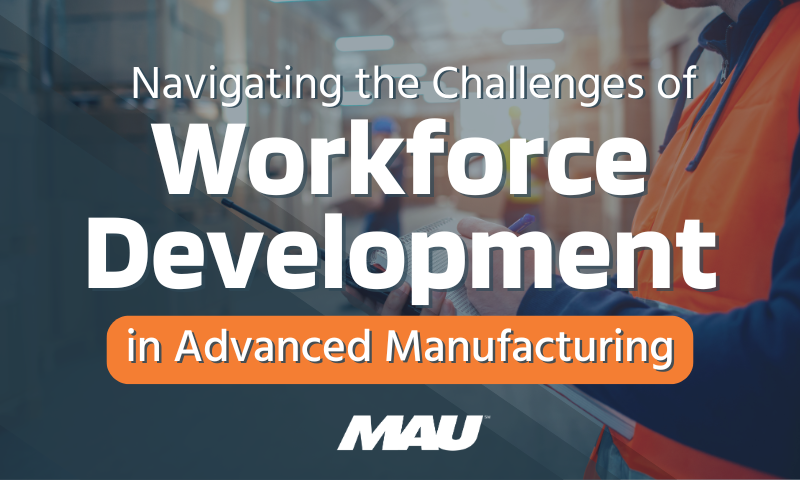Finding the right talent to drive your business forward has always been challenging, but filling essential job roles can be daunting in today’s workforce. Referred to as the Skills Gap, this issue revolves around insufficiently skilled workers in the labor market—resulting in many positions going unfilled.
Advancing technology has caused a significant skills gap in the manufacturing industry. The rise of automation through AI has allowed for increased productivity and efficiency, but it has also made certain jobs obsolete while creating a demand for new skills.
This means that workers with traditional manufacturing skills may not have the necessary knowledge to operate and maintain these new technologies, leading to a shortage of qualified workers. As a result, companies struggle to find skilled laborers to fill these positions, creating a gap in the job market.
While this presents a harsh reality for HR leaders and talent managers aiming to future-proof their organization, practical strategies they can employ will make it easier to bridge this divide—and secure quality applicants well-suited for available openings.
Analyze the Skills Gap
In today’s competitive job market, employers face a challenging conundrum: a shortage of skilled workers and a growing skills gap within their respective industries. By 2030, an estimated 2.1 million manufacturing jobs could go unfilled if the skills gap is not adequately addressed.¹While the extent of this problem varies between sectors, it remains a pressing concern for businesses that seek to remain competitive in an ever-evolving marketplace.
Advancements in technology and robotics have undoubtedly revolutionized the manufacturing industry, leading to increased productivity and efficiency. However, this progress has also created a shortage of skilled workers in the industry. With robots and other automated systems performing many of the tasks previously done by humans, there is a growing demand for specialized skills such as programming, maintenance, and troubleshooting.
Why is there a shortage of skilled workers in the first place?
The shortage of skilled workers in the manufacturing industry is a complex issue caused by several factors. Firstly, the pace at which technology is advancing has outpaced the ability of traditional education systems to keep up with the latest developments. As technologies evolve, workers must acquire new skills to operate and maintain them. However, many educational institutions have not adapted to this rapidly changing landscape, resulting in a skills gap.
Secondly, there is a perception that jobs in manufacturing are low-paying and not fulfilling, leading to a lack of interest in pursuing careers in this field. This perception can be attributed to several factors, such as the offshoring of manufacturing jobs, outdated stereotypes about the industry, and lack of awareness about the opportunities available. As a result, many young people choose other career paths, leading to a shortage of qualified workers.
Finally, the baby boomer generation is retiring, taking with them years of experience and knowledge that cannot easily be replaced. Many workers who have spent their careers in manufacturing are reaching retirement age, and there are not enough younger workers to replace them. This loss of expertise can lead to a lack of institutional knowledge and make it challenging for companies to maintain the same level of quality and productivity.
Steps Manufacturers can take Today to Combat the Skills Gap
To address this issue, manufacturers can take several steps today to ensure a steady supply of skilled workers. Firstly, investing in training programs is a highly effective approach to combat the skills gap. Almost 60% of manufacturers surveyed by the National Association of Manufacturers (NAM) are creating or expanding internal training programs to address skills shortages. Manufacturers can partner with educational institutions or offer in-house training programs to provide workers with the skills needed to operate and maintain new technologies.
Secondly, leveraging technology such as artificial intelligence (AI) and machine learning can free workers to focus on more complex tasks and improve overall productivity. This can help manufacturers remain competitive and meet the demands of a changing industry.
Lastly, promoting manufacturing jobs as fulfilling and well-paying careers, building partnerships with the community, and prioritizing diversity and inclusion in recruitment efforts are all effective strategies to bridge the skills gap. By taking these steps, manufacturers can ensure they have access to a skilled workforce and remain competitive in the global market while providing fulfilling and well-paying careers for their employees.
In conclusion, the skills gap in the manufacturing industry is a multifaceted challenge that requires comprehensive solutions. Manufacturers can bridge the skills gap and remain competitive in a rapidly changing industry by investing in training programs, leveraging technology, promoting manufacturing jobs, building partnerships with the community, and prioritizing diversity and inclusion.





